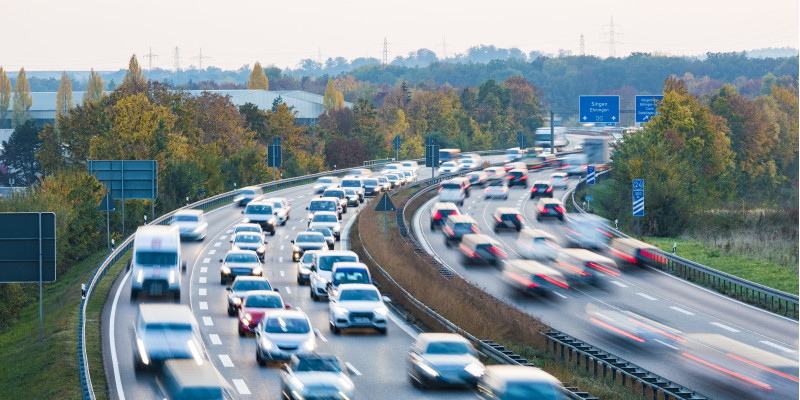The nEHS covers all German fuel emissions outside the EU ETS 1. The transport and buildings sectors have great influence on the emissions trend in the nEHS. Emissions from transport increased by 2 per cent compared to 2021. In contrast, emissions in the buildings sector fell by 7.4 per cent. Still, the target set by the Climate Protection Act for the buildings sector was exceeded.
The decline is mainly due to energy savings in 2022 as Russia’s war against Ukraine drove up prices. Mild weather conditions also contributed to the decline. There has been for example a significant decline of around 14 per cent in natural gas within the nEHS.
Natural gas and diesel each account for around a third of the reported emissions in the nEHS. They are followed by petrol and heating oil, each with around one sixth of emissions. Liquid petroleum gas and aviation fuel are also included in the nEHS in 2021 and 2022. However, they only account for a small proportion of emissions.
“Although emissions in national emissions trading have declined due to external factors, there is still a considerable need for action in the building and transport sectors,” says UBA President Dirk Messner. Emissions trading will play an even more important role here in future. To achieve this, however, the current fixed prices in national emissions trading would have to be significantly increased.
Messner adds: “It's crucial that the revenue from CO₂ pricing is used to actively underpin social and economic policy for the transformation processes affecting society as a whole. Ambitious climate protection, social responsibility and economic competitiveness are not in conflict with each other, and can be harmonised through emissions trading.”
Total German greenhouse gas emissions amounted to around 750 million tonnes of CO₂-eq in 2022, with the nEHS share corresponding to around 38.3 percent. The share of the EU ETS 1 is 47.2 percent. Overall, around 85.5 per cent of total German emissions in 2022 were therefore subject to CO₂ pricing through the nEHS or EU ETS 1.
The figures don’t cover emissions from agriculture, which are primarily caused by livestock farming (methane emissions) and nitrogen fertilisation of the soil (nitrous oxide emissions). Other fuel emissions, including from coal and waste, will not be included in the nETS until 2023 and 2024.
The three-year preparatory phase for the new European emissions trading scheme for buildings, transport and additional sectors (EU ETS 2), which is scheduled to be fully operational in 2027, also begins this year. This preparatory phase is purely a reporting phase that doesn’t mandate an obligation to submit emissions.
The EU ETS 2 is similar to the nETS, but there are also significant differences such as the restriction of the scope of application to certain end-users of fuels, different implementation deadlines and the fact that pricing will take place via the market from the outset.
“With the introduction of the nETS in 2021, Germany took on an important pioneering role in Europe and thus paved the way for the EU ETS 2,” explains Jürgen Landgrebe, Head of the “Climate Protection, Energy and German Emissions Trading Authority” department at the UBA. “From a climate policy perspective, the transition to the EU ETS 2 offers great opportunities because the binding emission caps at EU level finally secure the agreed reduction targets. In the transition from the nEHS to the European system, we are committed to efficient, equally integrated and streamlined implementation for all stakeholders involved.”
The German Emissions Trading Authority (DEHSt) at the UBA is responsible for the implementation of national emissions trading and European emissions trading in Germany.
 Click to enlarge
Click to enlarge
